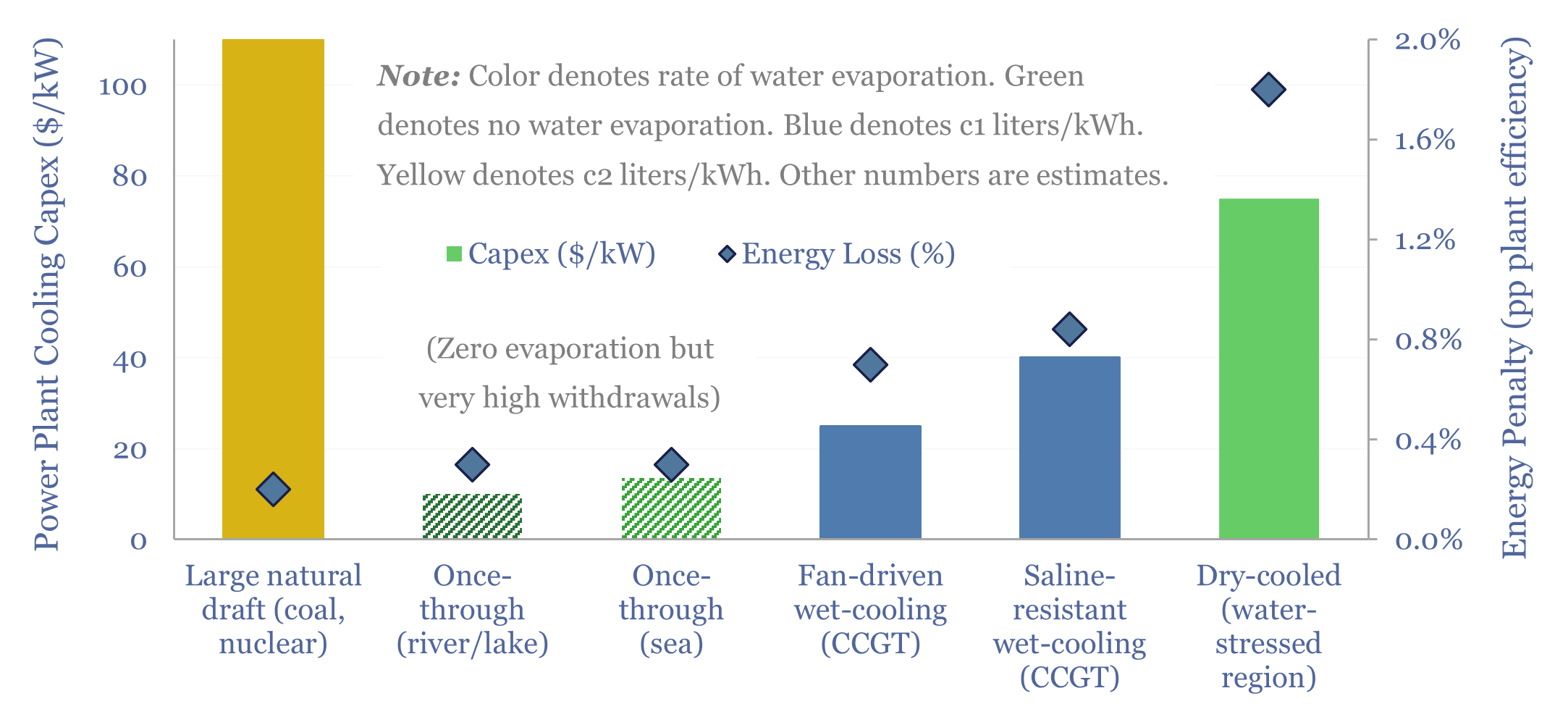Water is needed to condense steam, downstream of the steam turbines, in nuclear, coal and CCGT power plants. But thermal power demands and fresh water scarcity are both structurally rising. Hence this 16-page report explores how the energy industry might adapt, trends in power plant cooling, and who benefits.
Even in an optimistic scenario, we no longer see global emissions dropping below 30GTpa by 2050, which points to 2.5-3ºC of warming by 2100. This is expected to amplify droughts and water stresses, especially in dry climates. But at the same time, water demands from global electricity generation are rising at more than 1% per year, as outlined on pages 2-3.
Why do power plants use water at all? Without using water to condense steam, downstream of a steam turbine, the maximum achievable efficiency of a Rankine cycle steam turbine would be about 15%. The numbers and engineering details are explained on pages 4-5.
Downstream of a steam turbine, low-pressure steam is condensed by heat-exchange with cooling water, which in turn heats up, and must itself be cooled down before it can be recirculated or discharged. This often takes place in cooling towers, whose design, functioning, materials and costs are described on pages 6-8.
Water costs can thus be material to CCGT economics. And if water is not available, it may not be possible to build new CCGTs at all, which would dent the outlook for gas turbines. Water costs, and the economic costs of different CCGT cooling system designs, are reviewed on pages 9-10.
Could CCGTs be sited within shale basins, and then source their cooling needs from produced water, which would otherwise need to be disposed of (at a shale water disposal cost of perhaps $1/bbl). It is a nice idea. Economics and challenges are discussed on pages 11-14.
Leading companies in power plant cooling and shale water processing, which stood out from our reviews of technical papers, are discussed on pages 15-16.
